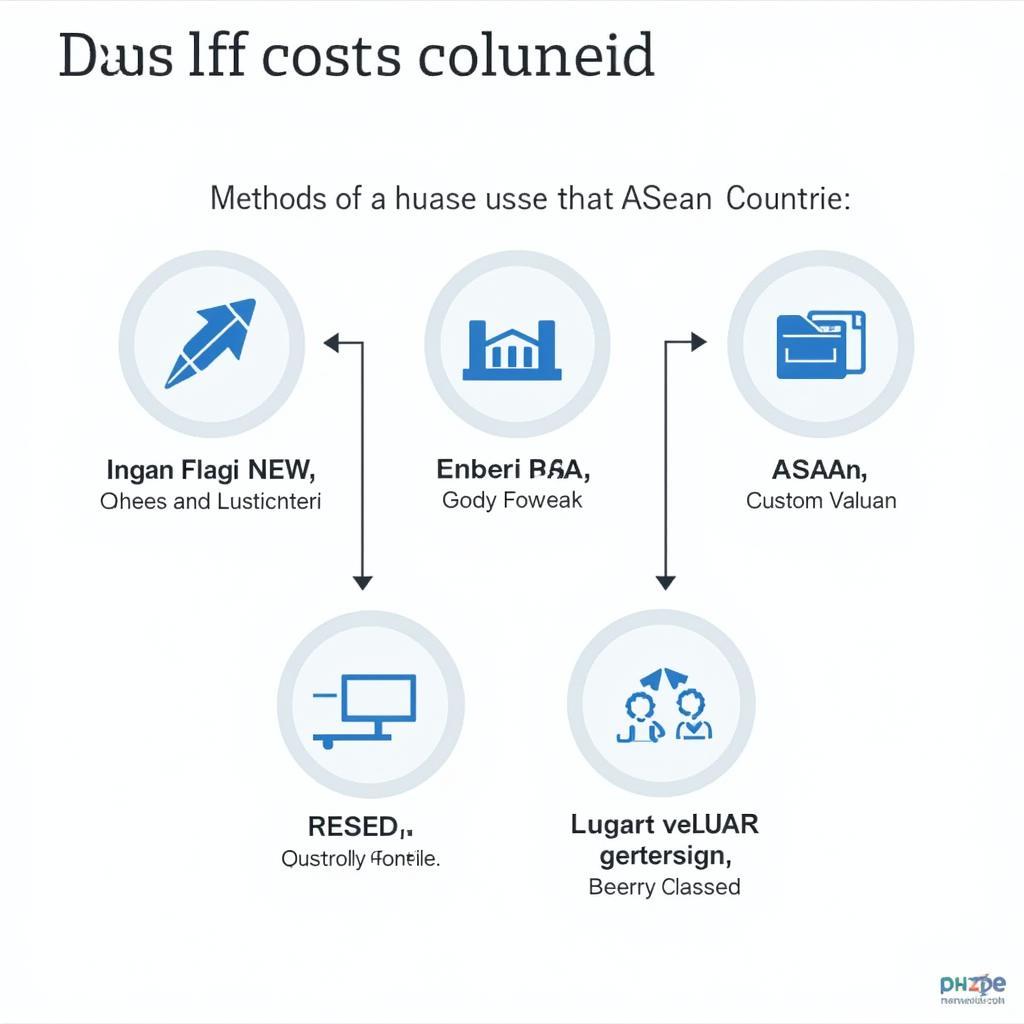The South China Sea dispute is a complex geopolitical issue that significantly impacts ASEAN and its member states. This article explores the multifaceted nature of the conflict, analyzing its implications for regional stability and the role of ASEAN in managing these tensions. Asean And South China Sea Conflict are intertwined, impacting regional dynamics and international relations. We’ll delve into the historical context, legal frameworks, and the interests of various stakeholders involved. asean and quad explores related regional dynamics, offering valuable insights into the broader geopolitical landscape.
Understanding the Historical Context of the South China Sea Dispute
The South China Sea, a crucial maritime route rich in resources, has been a source of contention for centuries. Overlapping claims by several ASEAN member states, including Vietnam, the Philippines, Malaysia, and Brunei, alongside China and Taiwan, have created a complex web of conflicting interests. These claims are rooted in historical usage, geographic proximity, and perceived sovereign rights.
The historical narrative of the South China Sea is complex and often contested, with each claimant nation presenting its own interpretation of historical events to justify their claims. This historical baggage makes resolving the current dispute even more challenging.
The Role of International Law and UNCLOS
The United Nations Convention on the Law of the Sea (UNCLOS) serves as the primary legal framework governing maritime disputes. While it provides a basis for defining maritime zones and resolving disputes, its interpretation and application in the South China Sea context remain contentious. China’s assertion of “historic rights” within its “nine-dash line” clashes with UNCLOS provisions, adding further complexity to the conflict. How can ASEAN navigate these legal complexities and work towards a rules-based resolution?
Several key provisions within UNCLOS, such as the definition of territorial waters, exclusive economic zones, and the continental shelf, are central to the South China Sea dispute. Understanding these provisions is crucial for comprehending the legal arguments presented by the various claimants.
ASEAN’s Response and the Code of Conduct
ASEAN plays a pivotal role in mediating the South China Sea conflict and promoting regional stability. The organization has pursued a multilateral approach, emphasizing dialogue and cooperation among its member states and China. A key initiative is the development of a Code of Conduct (COC) in the South China Sea, aimed at managing tensions and preventing escalation. ase goch offers more context on ASEAN’s efforts in conflict resolution. However, negotiations for a binding and effective COC have faced significant hurdles due to differing interpretations and strategic interests.
What are the key challenges in achieving a comprehensive and effective Code of Conduct? How can ASEAN effectively balance the interests of its member states while engaging with China on this sensitive issue? The development of a Code of Conduct is seen as crucial for establishing a framework for peaceful resolution of disputes and managing tensions in the South China Sea.
Economic and Security Implications for the Region
The South China Sea conflict has significant economic and security ramifications for the entire region. Disruptions to trade, fishing, and resource exploration pose substantial economic risks. The increased militarization of the disputed areas also raises concerns about the potential for miscalculation and escalation. Maintaining a stable and peaceful South China Sea is paramount for the economic prosperity and security of all stakeholders.
“The South China Sea dispute has the potential to destabilize the entire region, impacting trade routes, energy security, and the livelihoods of millions,” warns Dr. Amelia Nguyen, a leading expert on Southeast Asian geopolitics.
The Future of the South China Sea: Challenges and Opportunities
The future of the South China Sea remains uncertain, with numerous challenges and opportunities ahead. Balancing the interests of the various claimants, upholding international law, and fostering regional cooperation are essential for navigating this complex geopolitical landscape. ASEAN’s continued engagement and leadership will be crucial in shaping the future of the South China Sea. ase c'est quoi offers further insight into the organization’s role in the region.
“Finding a sustainable solution requires a commitment to dialogue, diplomacy, and a willingness to compromise,” states Professor Michael Tan, an expert in international maritime law.
Conclusion
The ASEAN and South China Sea conflict is a complex issue requiring sustained diplomatic efforts and regional cooperation. A peaceful resolution that respects international law and the interests of all stakeholders is essential for ensuring stability and prosperity in this vital region. ap human geography quizlet asean can help you further understand ASEAN’s role in this complex geopolitical landscape.
FAQ
- What is the nine-dash line?
- How does UNCLOS apply to the South China Sea?
- What is ASEAN’s role in the dispute?
- What are the economic implications of the conflict?
- What is the Code of Conduct (COC)?
- How does the South China Sea conflict affect international relations?
- What are the prospects for a peaceful resolution?
Common Scenarios and Questions
- Scenario: A fishing boat from an ASEAN member state is confronted by a Chinese coast guard vessel within the disputed waters. What are the potential legal and diplomatic ramifications?
- Question: How can ASEAN leverage its collective bargaining power to effectively address the South China Sea issue with China?
Further Exploration
Explore more articles on our website related to ASEAN’s geopolitical landscape and regional security issues. You can also find resources on international maritime law and conflict resolution mechanisms.
Need assistance? Contact us 24/7:
Phone: 0369020373
Email: [email protected]
Address: Thon Ngoc Lien, Hiep Hoa, Bac Giang, Vietnam.


